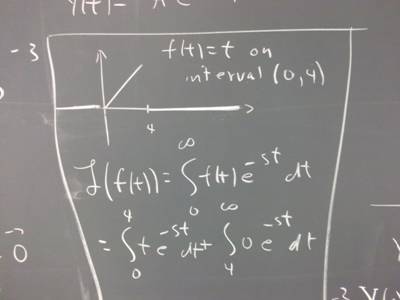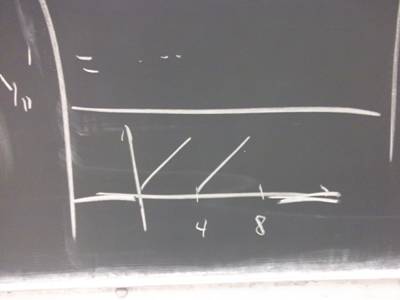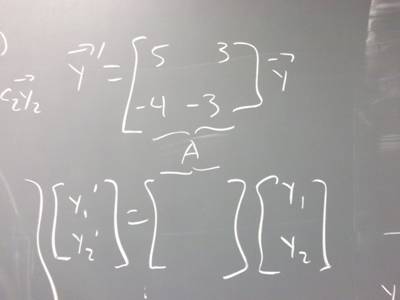
110413 Differential Equations
1. Find solutions of
y ' = [ 5, 3; -4, -3 ] y
for which y(1) = [2; 0].
****
#$&*
Find the expression for W(t), the Wronskian of the solution.
Show that W(t) = W(1) * e^(integral(2 ds, s from 1 to t)).
****
#$&*
2. Recall that a geometric series is of the form 1 + r + r^2 + r^3 + .... r^n.
The sum of this geometric series is (1 - r^(n+1) ) / (1 - r).
In the limit as n -> infinity, the sum is 1 / (1 - r).
What therefore is the sum of the series
1 - e^(-s) + e^(-2 s) - e^(-3 s) ... ?
What might this have to do with the Laplace Transform of the step function H(t) - 2 H ( t - 1) + 2 H ( t - 2) ... ?
3. Here is a table of some functions and their Laplace Transforms, all easily found by straightforward integration:
| H(t) | 1/s, s > 0 |
| t^n | n ! / s^(n+1) |
| e^(alpha t) | 1 / (s - alpha), s > alpha |
| sin(omega t) | omega / (s^2 + omega^2) |
| cos(omega t) | s / (s^2 + omega^2) |
| e^(alpha t) * f(t) | F(s - alpha), where F(s) is the Laplace Transform of f(t) (subject to certain restrictions on f(t) ). |
| f ' (t) | s F(s) - f(0), where F(s) is the Laplace Transform of f(t) |
| f '' ( t ) | s^2 F(s) - s f (0) - f ' (0) |
If the Laplace Transform of a function f(t) is found to be 1 / (s - 4) + 1 / (s + 1), then what is f(t)?
What if the Laplace Transform is 2 / (s - 4) + 3 / (s + 1)?
What if the Laplace Transform is 5 / (s^2 + 25)?
What if the Laplace Transform is 10 / (s^2 + 25)?
What if the Laplace Transform is s / (s^2 + 25)?
4. What is the Laplace Transform of the equation
y '' - 4 y ' - 5 y = 0
subject to y (0) = 0 and y ' (0) = 1? Denote the Laplace Transform of y by Y.
Solve for Y, and find the function y corresponding to this transform.
5. Let f(t) = 0 everywhere except on the interval 0 <= t <= 4; on this interval f(t) = t. Sketch a graph of f(t).
What is the Laplace Transform of f(t)?
Let g(t) = 0 everywhere except on the interval 0 <= t <= 4, on which g(t) = t, and on the interval 4 <= t <= 8, on which g(t) = t - 4.
Sketch a graph and find the Laplace Transform of g(t).
What would happen if we kept adding intervals in a similar manner?
6. Let f(t) = 0 everywhere except on the interval 0 <= t <= 4, on which interval f(t) = cos( pi / 2 * t). Sketch the graph of this function and find its Laplace Transform.
Let g(t) = 0 everywhere except on the interval 0 <= t <= 8, on which interval g(t) = cos( pi / 2 * t). Sketch the graph of this function and find its Laplace Transform.
What would happen if we kept adding intervals in a similar manner?

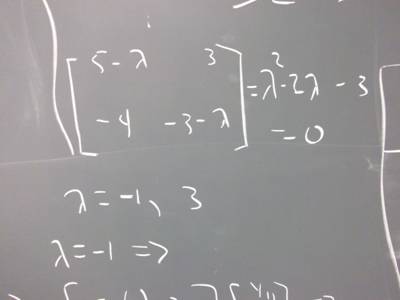
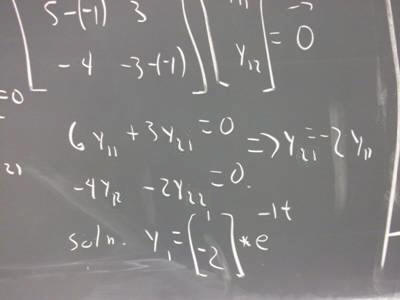
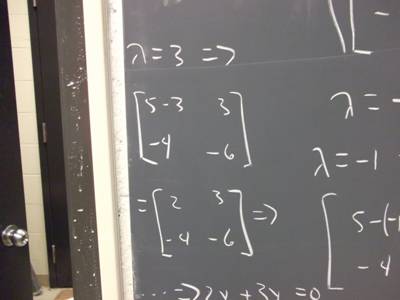
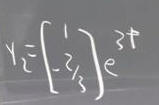
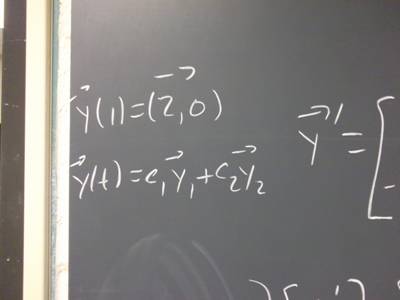
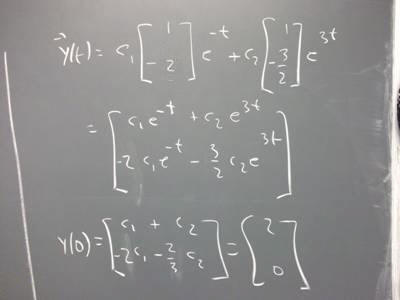
There might be some bad arithmetic in the above; you should correct the solution.
Overview: We are assuming solutions to the equation A y = y ' to be of the form e^(lambda t) * [ c ; d ], leading to y ' = lambda e^(lambda t) * [ c; d ] so that A y = lambda y. This leads to the eigenvalue problem; having found an eigenvalue lambda we can then solve for c and d. We expect two eigenvalues for the system of two equations, so we expect two solutions. If the solutions are denoted y_1 = [y_11; y_21] and y_2 = [y_12; y_22] then the Wronskian is the matrix [ y_11, y_12; y_21, y_22 ].



If 1 / (s - 4) + 1 / (s + 1) is the Laplace Transform of a solution, then since L(e^(alpha t)) = 1 / (s - alpha), 1 / (s - 4) is the transform of e^(4 t) and 1 / (s + 1) is the transform of e^-t.
By the linearity of the transform, 1 / (s - 4) + 1 / (s + 1) is thus the transform of e^(4 t) + e^(-t).
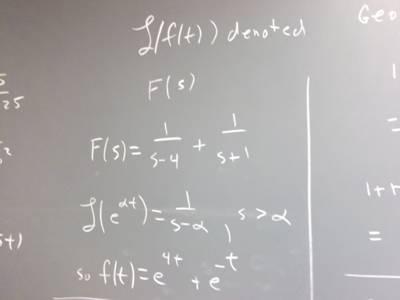
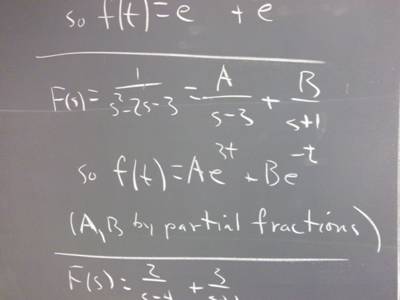
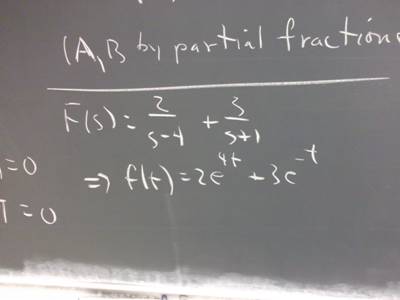
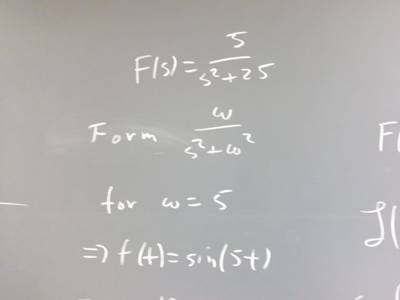
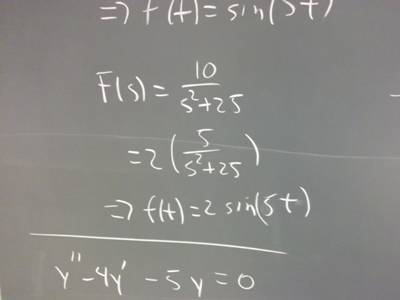
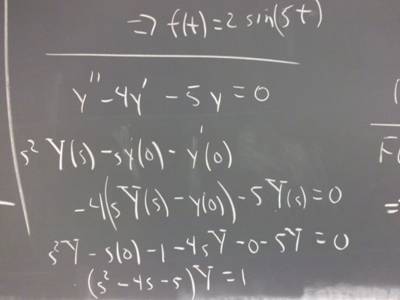
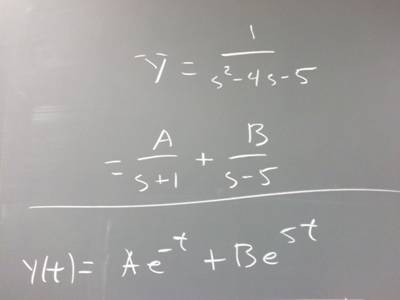
In the above, A and B can be found using partial fractions.
